I have the following setup:

simulate this circuit – Schematic created using CircuitLab
(The LEDs are actually some generic UV leds without a known part number, so I didn't edit the default number in the schematic.)
When applying 5 to 10 Volts at V1 I always only get D1 to glow, how can that be and what can I do to fix this?
Already checked the board for shorts and also supplied 5V directly to some other LEDs by crocodile clip cable, then they work correctly.
Oh and sometimes when using crocodile clip cable to jump over R1 some other LEDs randomly flash on, and then instantly off, and D1 remains the only one glowing.